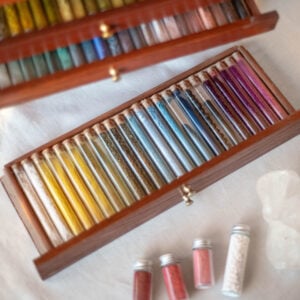Sunday Visit: From Plant to Pigment with Natalie Stopka
Natalie Stopka’s work lives at the confluence of artistry, ecology, and inquiry. A bookmaker and pigment artist attuned to the language of materials, she explores the cycles of growth, decay, and transformation through color coaxed from the natural world. Her studio practice feels like collaboration rather than control—an ongoing conversation between plant, hand, and time. In this week’s Sunday Visit, Natalie opens the doors to that world, where books are bound with patience, pigments ripen through experiment, and the intimacy of observation becomes a creative act in itself. Her new book, From Plant to Pigment, grew from years of teaching … Read more


